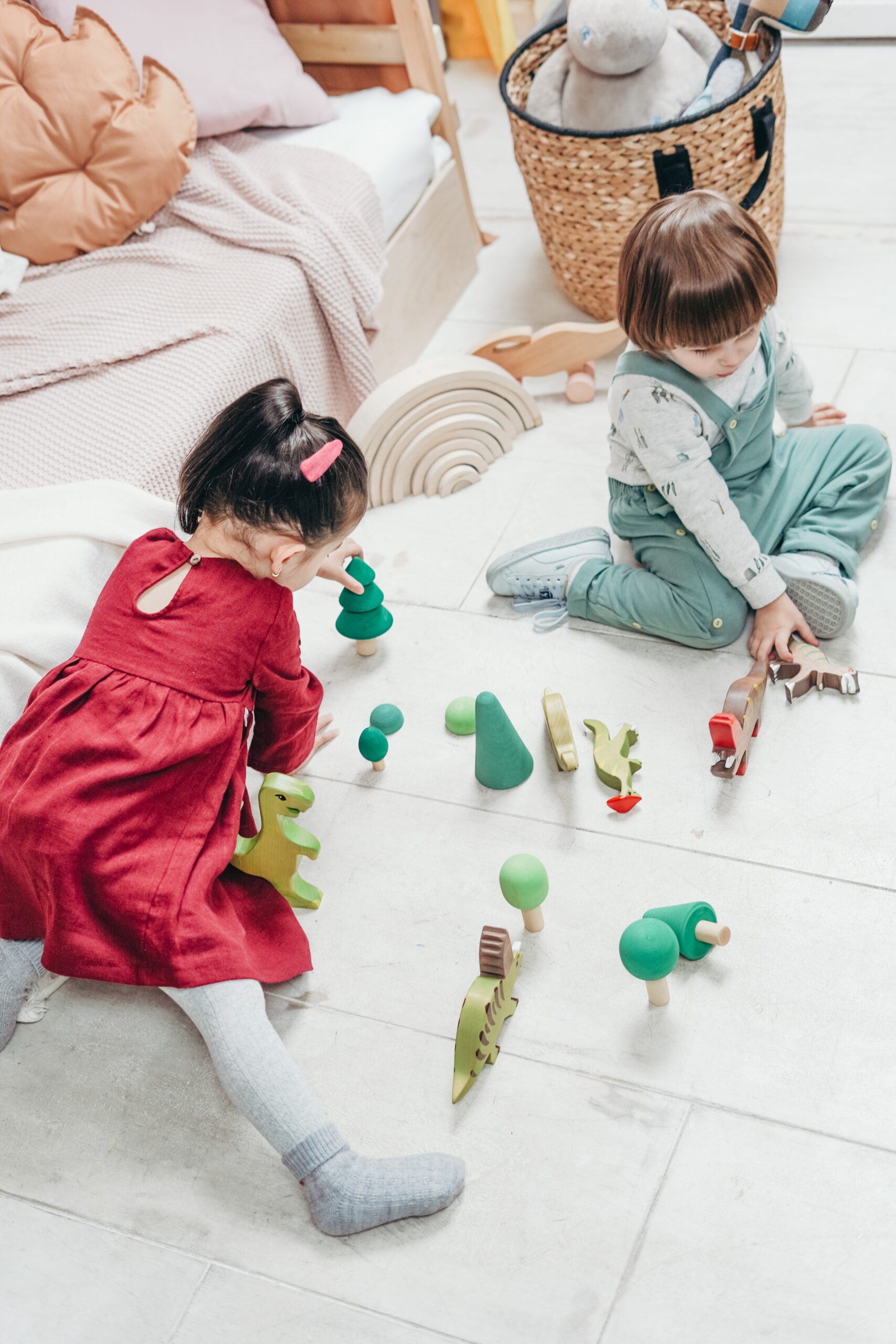Hey there, fellow parents and educators! If you’ve embarked on the Montessori journey with your little one, you probably already know how vital it is to create a stimulating, safe, and enriching environment for their learning. Central to the Montessori philosophy is the use of carefully selected materials that encourage exploration and independent discovery. In this deep dive into Montessori Toy Safety: What to Look for in Materials, we’ll unravel the secrets to ensuring your child’s playtime is not only fun but also secure.
So, grab a cozy seat and join us as we explore the world of Montessori toy materials, decipher the code of safe play, and equip you with the knowledge to make informed choices for your budding scholar.
Montessori Toy Materials: Natural, Wooden, and Beyond
Wood: The Timeless Favorite
Ah, the charm of wooden toys! They’ve been enchanting children for generations, and Montessori education adores them for good reason. But what’s the deal with wood, and how can you make sure it’s safe?
- Benefits of Wooden Toys
They’re durable as heck, standing up to even the most enthusiastic little hands.
Wooden toys are sensory delights, offering various textures and smells.
They encourage creativity and open-ended play, supporting Montessori principles.
- How to Identify Safe Wooden Toys
Check for splinters or rough edges. Smoothness is key!
Ensure the paint or finish used is non-toxic. Look for labels like “lead-free” or “child-safe.”
Verify that the toy doesn’t have small parts that could become choking hazards.
Natural Materials: Closer to Nature
Montessori education values the use of natural materials that connect children to the world around them. Here’s why natural is fantastic and how to keep it safe:
- The Appeal of Natural Materials
They’re eco-friendly, promoting environmental awareness.
Natural textures like cotton, silk, and wool engage a child’s senses.
These materials are often hypoallergenic, catering to sensitive skin.
- Ensuring the Safety of Natural Toys
Check for any loose threads or small components that could be ingested.
Washable materials are a plus, allowing for easy clean-up after messy play.
Always opt for organic or OEKO-TEX certified fabrics for peace of mind.
Avoiding Harmful Chemicals: A Parent’s Detective Work
In the quest for Montessori Toy Safety: What to Look for in Materials, staying vigilant about chemicals is crucial. Let’s dive into this detective work:
- Common Chemicals to Watch Out For
Phthalates, BPA, and lead: The villains in toy safety.
Be cautious of PVC (Polyvinyl Chloride) in plastic toys.
Formaldehyde, a sneaky preservative found in some wood finishes.
- How to Recognize Non-Toxic Toys
Read labels diligently; look for “non-toxic,” “BPA-free,” or “phthalate-free” indications.
Opt for toys made from natural, organic materials that are less likely to contain harmful chemicals.
Research trusted brands that prioritize safety and sustainability.
- The Role of Certifications
Seek out toys with certifications like ASTM, CPSC, or CE marking, indicating compliance with safety standards.
Montessori materials often adhere to these standards, but it’s wise to double-check.
Size and Choking Hazards: Keeping It Just Right
In the Montessori world, size matters! Let’s talk about the nitty-gritty of toy sizes and choking hazards:
- Montessori Principles Related to Toy Size
Montessori toys are intentionally designed to fit snugly in a child’s hand, promoting coordination.
Small parts are a big no-no, aligning with Montessori’s focus on safety and independence.
- Guidelines for Age-Appropriate Toy Sizes
For infants and toddlers, avoid toys with parts smaller than 1.25 inches in diameter.
Pay attention to age recommendations on toy packaging.
- The Importance of Regular Safety Checks
Conduct routine inspections of your child’s toys to ensure no parts have become loose or damaged.
As your child grows, reassess their toys to match their developmental stage.
Durability and Construction: Sturdy Playmates
Kids can be rough on their toys. Let’s explore why durability and construction matter in Montessori toy safety:
- Sturdy Toys for Active Learning
Montessori toys are built to withstand the test of time, enduring years of play.
Well-constructed toys can be passed down through generations, promoting sustainability.
- Assessing the Durability of Montessori Materials
Examine the joints, seams, and fastenings of toys for strength and durability.
Wooden toys should have a smooth, strong finish that can endure hours of handling.
- Toy Maintenance Tips
Clean toys regularly to prevent the buildup of dirt and bacteria.
Repair or replace damaged toys promptly to ensure safety.
Recommendations for Choosing Safe Montessori Toys
Now that you’re a Montessori Toy Safety detective, here are some practical tips to make the right choices:
- Research Reputable Brands
Look for brands known for their commitment to quality and safety in Montessori materials.
- Read Reviews and Ask for Recommendations
Other parents and educators can be your best allies in finding safe, engaging toys.
- Consider Your Child’s Age and Developmental Stage
Choose toys that align with your child’s current abilities and foster their growth.
- Creating a Safe Montessori Learning Environment
Ensure your play area is free of hazards, with adequate supervision when needed.
FAQs: Your Burning Questions Answered
Are plastic toys always a no-go in Montessori education?
Not necessarily. Montessori principles value natural materials, but safe, high-quality plastic toys can have their place if they meet the safety criteria.
How often should I inspect my child’s toys for safety?
Regular checks are crucial. Aim for monthly inspections and always after an accident or if you suspect damage.
What if I can’t find Montessori-branded toys? Are other brands suitable?
Absolutely! Focus on the materials, construction, and safety features rather than the brand name.
Conclusion
In our quest to decipher Montessori Toy Safety: What to Look for in Materials, we’ve unveiled the secrets to creating a secure, enriching environment for your child’s learning journey. Remember, it’s not just about the fun; it’s about fostering independence, creativity, and safe exploration.
So, fellow explorers, go forth with your newfound wisdom. Choose toys wisely, inspect them regularly, and watch your child thrive

